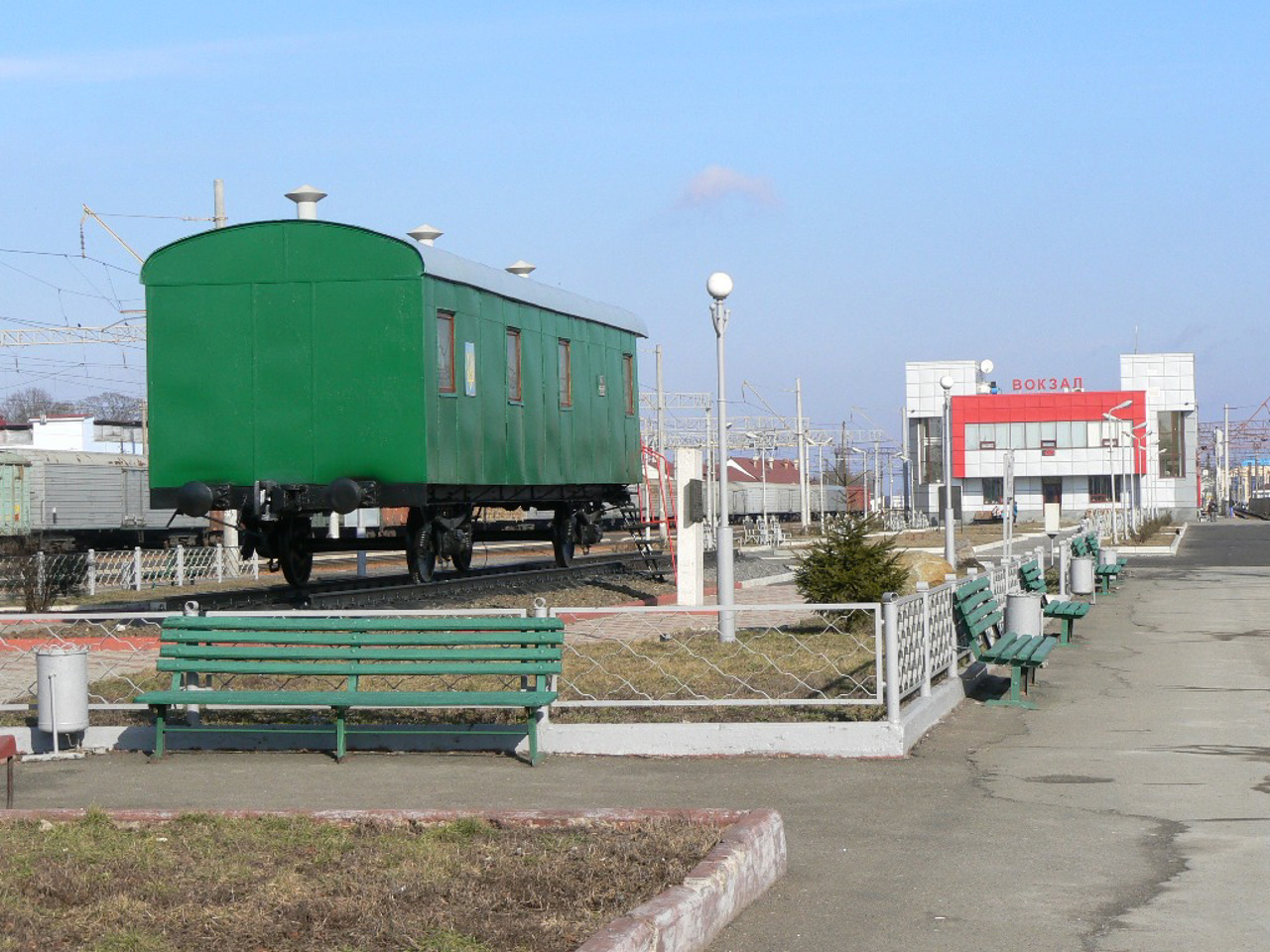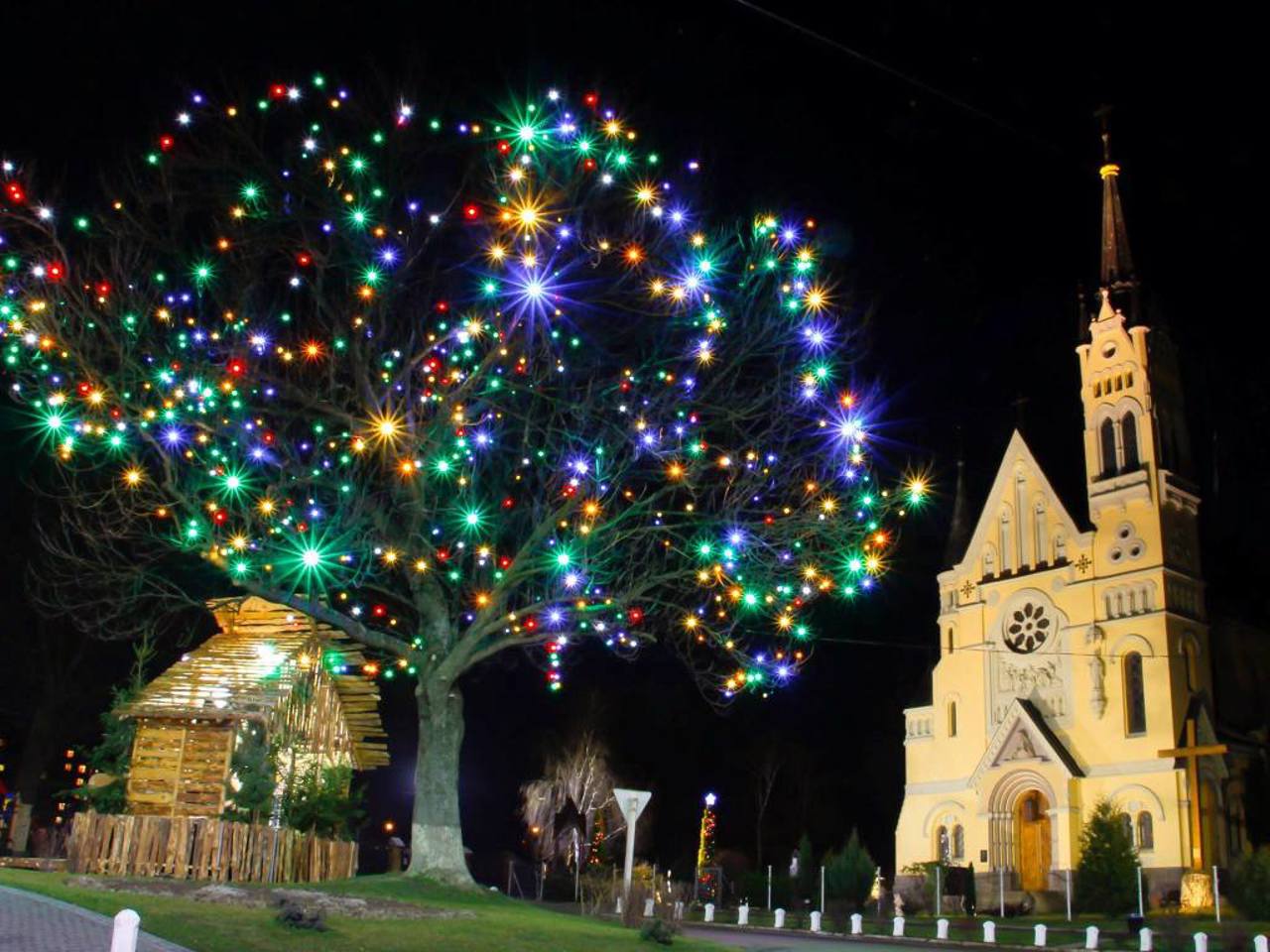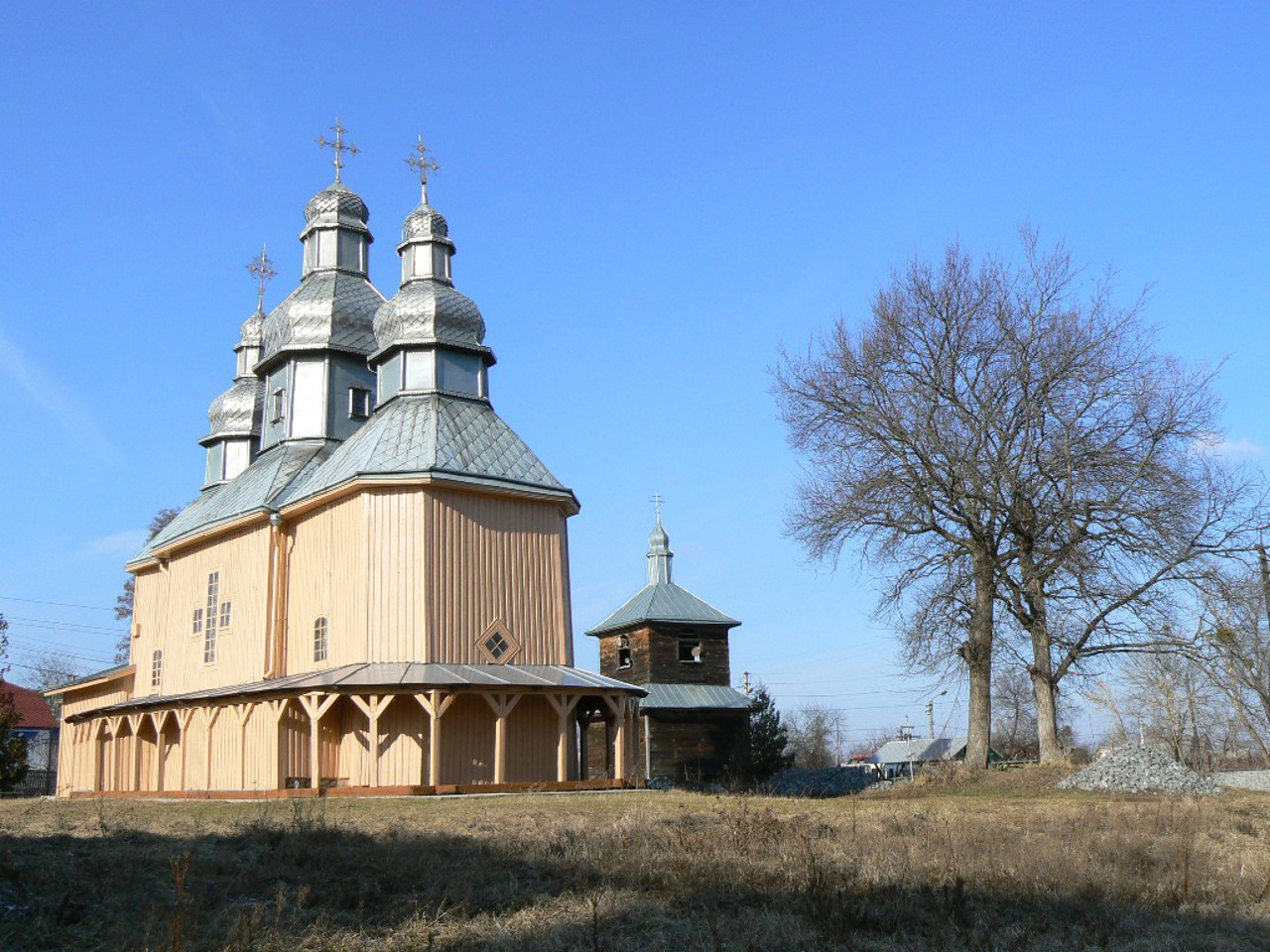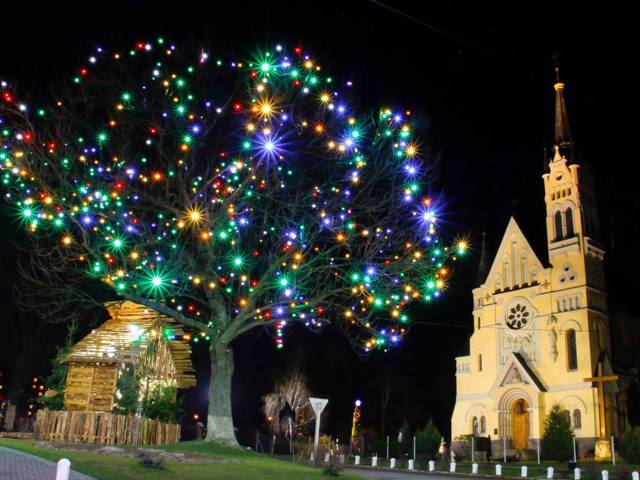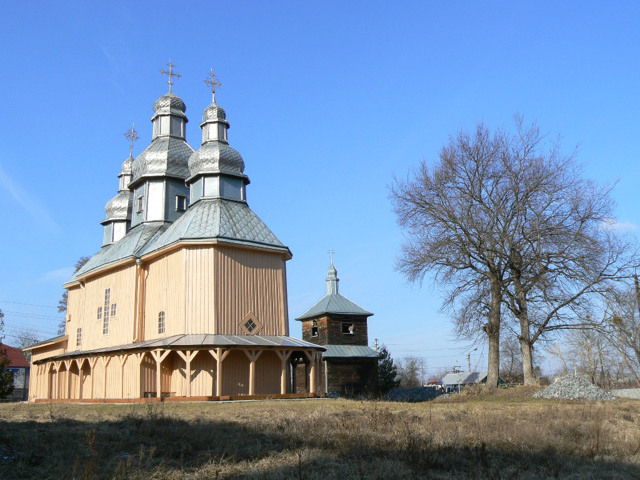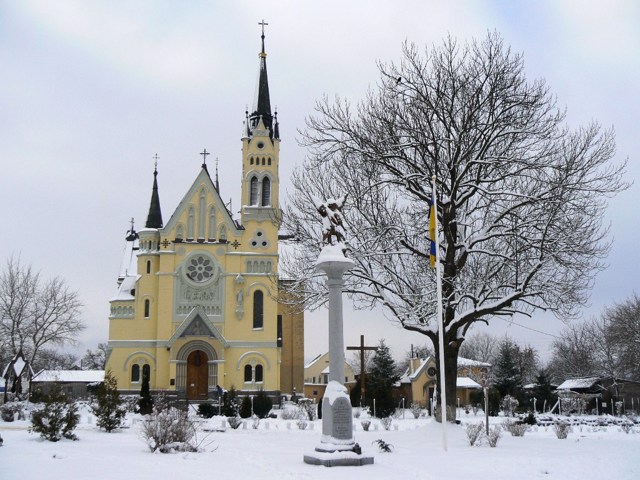Functional temporarily unavailable
General information about Fastiv
The large district center of Fastiv, 70 kilometers northwest of Kyiv, in ancient times was called Khvastiv.
The revival after the Tatar-Mongol invasions began in the 16th century, when Fastiv was owned by the Rozhanovsky princes.
In 1601 the city received the Magdeburg law and became the residence of the bishops. A church was built here, a Jesuit college was opened, and a Bernardine monastery was founded.
At the end of the 17th century, Fastiv became a regimental center, the residence of the famous Cossack colonel Semen Paliy, who built temples in the city and contributed to the settlement of these lands. During the Koliyivshchyna, the residence of the Cossack atamans Mykyta Shvachka and Andriy Zhurba was located in Fastiv.
In the second half of the XIX century t ...
The large district center of Fastiv, 70 kilometers northwest of Kyiv, in ancient times was called Khvastiv.
The revival after the Tatar-Mongol invasions began in the 16th century, when Fastiv was owned by the Rozhanovsky princes.
In 1601 the city received the Magdeburg law and became the residence of the bishops. A church was built here, a Jesuit college was opened, and a Bernardine monastery was founded.
At the end of the 17th century, Fastiv became a regimental center, the residence of the famous Cossack colonel Semen Paliy, who built temples in the city and contributed to the settlement of these lands. During the Koliyivshchyna, the residence of the Cossack atamans Mykyta Shvachka and Andriy Zhurba was located in Fastiv.
In the second half of the XIX century the city became the property of Frantsishek Ksaveriy Branytsky of Bila Tserkva - at his expense was built a pompous Church of the Exaltation (1903-1911).
The opening of traffic on the Fastiv Railway in 1870 contributed to the development of industry - opened a distillery, boiler and mechanical plant and brewery Yulius Zibert, which still produces beer brand "Zibert".
In 1918, a "pre-accession treaty" was signed at the Fastiv railway station, which preceded the Act on the Unification of the Ukrainian People's Republic and the Western Ukrainian People's Republic into a Single State (Act of Unification). Now on this day, as well as on the Day of Reunification, solemn events are held here every year.
Великий райцентр Фастів, що в 70 кілометрах на північний захід від Києва, в давнину називався Хвастів.
Відродження після татаро-монгольських набігів почалося з XVI сторіччя, коли Фастів перебував у власності князів Рожановських.
У 1601 році місто отримує Магдебурзьке право та стає резиденцією єпископів. Тут зводиться костел, відкривається єзуїтський колегіум, засновується монастир бернардинців.
Наприкінці XVII століття Фастів став полковим центром, резиденцією прославленого козацького полковника Семена Палія, який будував у місті храми та сприяв заселенню цих земель. За часів Коліївщини в Фастові розташовувалася резиденція козацьких отаманів Микити Швачки та Андрія Журби.
У другій половині XIX століття місто стало власністю Францішка Ксаверія Браницького з Білої ...
Великий райцентр Фастів, що в 70 кілометрах на північний захід від Києва, в давнину називався Хвастів.
Відродження після татаро-монгольських набігів почалося з XVI сторіччя, коли Фастів перебував у власності князів Рожановських.
У 1601 році місто отримує Магдебурзьке право та стає резиденцією єпископів. Тут зводиться костел, відкривається єзуїтський колегіум, засновується монастир бернардинців.
Наприкінці XVII століття Фастів став полковим центром, резиденцією прославленого козацького полковника Семена Палія, який будував у місті храми та сприяв заселенню цих земель. За часів Коліївщини в Фастові розташовувалася резиденція козацьких отаманів Микити Швачки та Андрія Журби.
У другій половині XIX століття місто стало власністю Францішка Ксаверія Браницького з Білої Церкви - на його кошти було споруджено помпезний Воздвиженський костел (1903-1911 роки).
Відкриття руху на Фастівській залізниці в 1870 році посприяло розвитку промисловості - відкрилися спиртзавод, котельно-механічний завод і пивоварня Юліуса Зіберта, яка і зараз випускає пиво марки "Зіберт".
У 1918 році на залізничній станції "Фастів" був підписаний "передвступний договір", який передував Акту про об'єднання УНР і ЗУНР в єдину державу (Акт Злуки). Зараз в цей день, а також в День Соборності, тут щорічно проходять урочисті заходи.
Сплануй своє перебування у Fastiv
What to see and where to go in Fastiv
Tourist attractions and museums of Fastiv
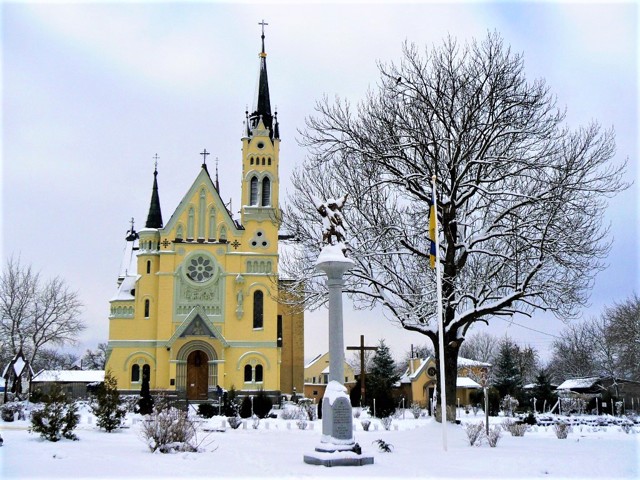
Exaltation of the Holy Cross Church
Temple , Architecture
The Roman Catholic Church of the Exaltation of the Holy Cross in Fastiv was built at the beginning of the 20th century according to the project of the architect Vladyslav Dombrovskyi in the neo-Gothic style at the expense of Countess Branytska.
The main facade is crowned by two different towers, between which the central entrance to the church is located. Above the entrance there is a characteristic round Gothic rose window. The facade features a sculpture of a bishop and a bas-relief composition "Christ Blessing the Children". The interior decoration of the church is quite ascetic, except for the columns with magnificent capitals.
The original asymmetric temple with rich decor is considered a business card of the city.
The building of the Catholic seminary is located nearby. Father Zygmund Kozar, the abbot of the church, thanks to whom the Catholic shrine of Fastiv was revived and restored in the 1990s, is buried on the territory of the Exaltation of the Holy Cross Church.
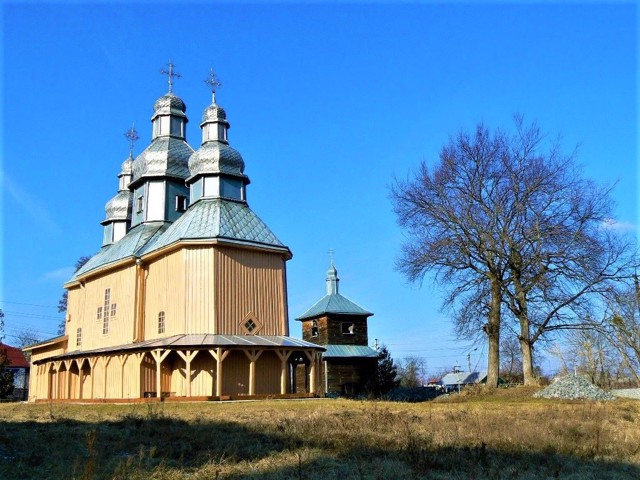
Intercession of Holy Virgin Church
Temple , Architecture
The Intercession Church in Fastiv is a masterpiece of Ukrainian wooden architecture in Central Ukraine.
It was built in 1740 on the site of the ancient temple, founded by the famous Fastiv colonel Semen Paliy. The three-log Intercession Church is distinguished by harmonious proportions and completeness of forms. An arcade gallery surrounds the temple along its perimeter.
In 1781, the temple bell tower was built. In Soviet times, a thorough restoration was carried out.
On June 23, 2022, the Intercession Church officially transferred to the Orthodox Church of Ukraine.
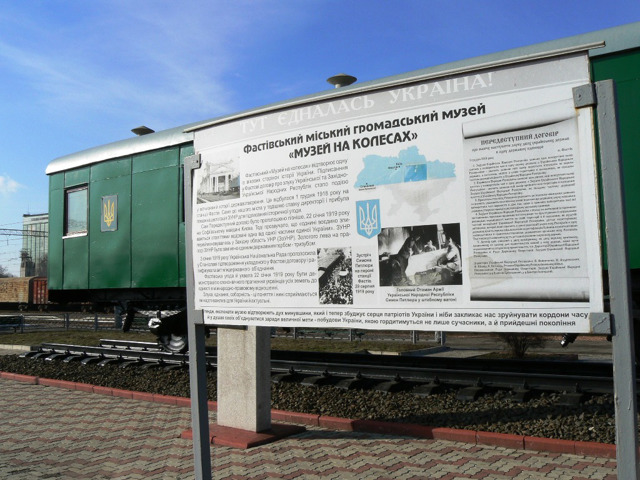
Union of UNR and ZUNR Museum-Wagon (Museum on Wheels)
Museum / gallery
"Museum on Wheels" is the Museum-Wagon of Union of the UNR with ZUNR, located at the "Fastiv" railway station together with the ancient steam locomotive.
In a similar staff car of the UNR Directory, negotiations took place at the end of 1918 between the leaders of the Ukrainian People's Republic, Volodymyr Vynnychenko and Symon Petlyura, on the one hand, and a delegation of the Western Ukrainian People's Republic, led by Kost Levytsky and Lonhyn Tsehelsky.
It was here on December 1, 1918 "pre-entry" agreement on the intention to unite the population and territories of the UNR and ZUNR into a single state. The Act of Unification was solemnly proclaimed a month and a half later, on January 19, 1919, on Sophia Square in Kyiv.
The exposition of the "Museum on Wheels" presents documents and photographs that tell about these events, money and postage stamps of those times. The interior and atmosphere of Petlyura's staff car were recreated.
You can visit the museum only by prior arrangement. Every year on the Day of Reunification, ceremonial events are held near the museum in Fastiv.

Fastiv Local Lore Museum
Museum / gallery
Fastiv Museum of Local Lore is located in the historic building of the bank (late XIX century), which is an example of the so-called borderless architecture in "brick" style.
The museum was founded in 1990, although its collection began to be created in the 1970s. The current exhibition is based on the results of archaeological research, ethnographic expeditions, searches in the archives.
Among the materials of the historical department of the Fastiv Museum of Local Lore are rare archival and photographic materials, as well as historical items that tell about the stay of the UNR Directory in Fastiv, about the battle near Motovylivka, about the unification of the UNR and the ZUNR, and other events.
Of particular interest is the current model of the railway and other exhibits about the one and a half century history of the Fastiv railway.
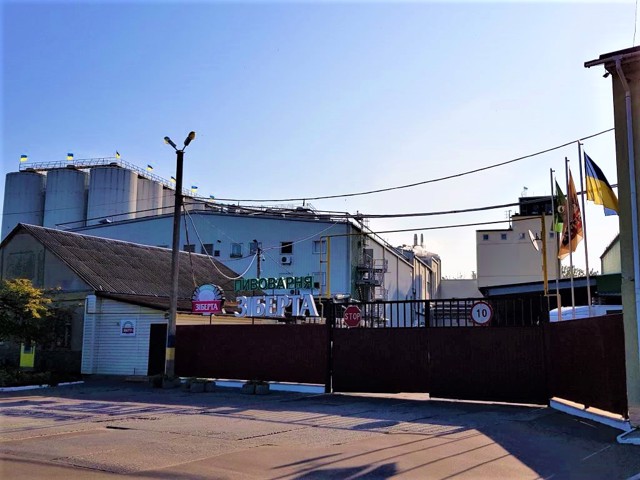
Brewery Zibert
Winery / brewery
The Fastiv Brewery was founded in 1906 by the burgher Yulius Zibert and the Prussian subject Herman Saalman.
A picturesque place on the banks of the Unava River in Zarichchya, next to the Intercession Church, was chosen for the construction of the plant. Beer production was adjusted by German specialists. At the time of its launch, the Fastiv Brewery could produce about 50,000 dal of beer per year. The enterprise was not damaged during both world wars.
A large-scale reconstruction with a complete update of technology was carried out in 2008. Currently, the capacity of the enterprise, which is part of the "Obolon" association, is 12 million deciliters of beer per year.
Tours with tastings are held every Thursday at "Zibert Brewery" (pre-registration is preferred). A branded store is open.
Fastiv on photo and video
Reviews Fastiv
Geographical information about Fastiv
| {{itemKey}} | {{itemValue}} |
|---|---|
| Region |
Kyiv |
